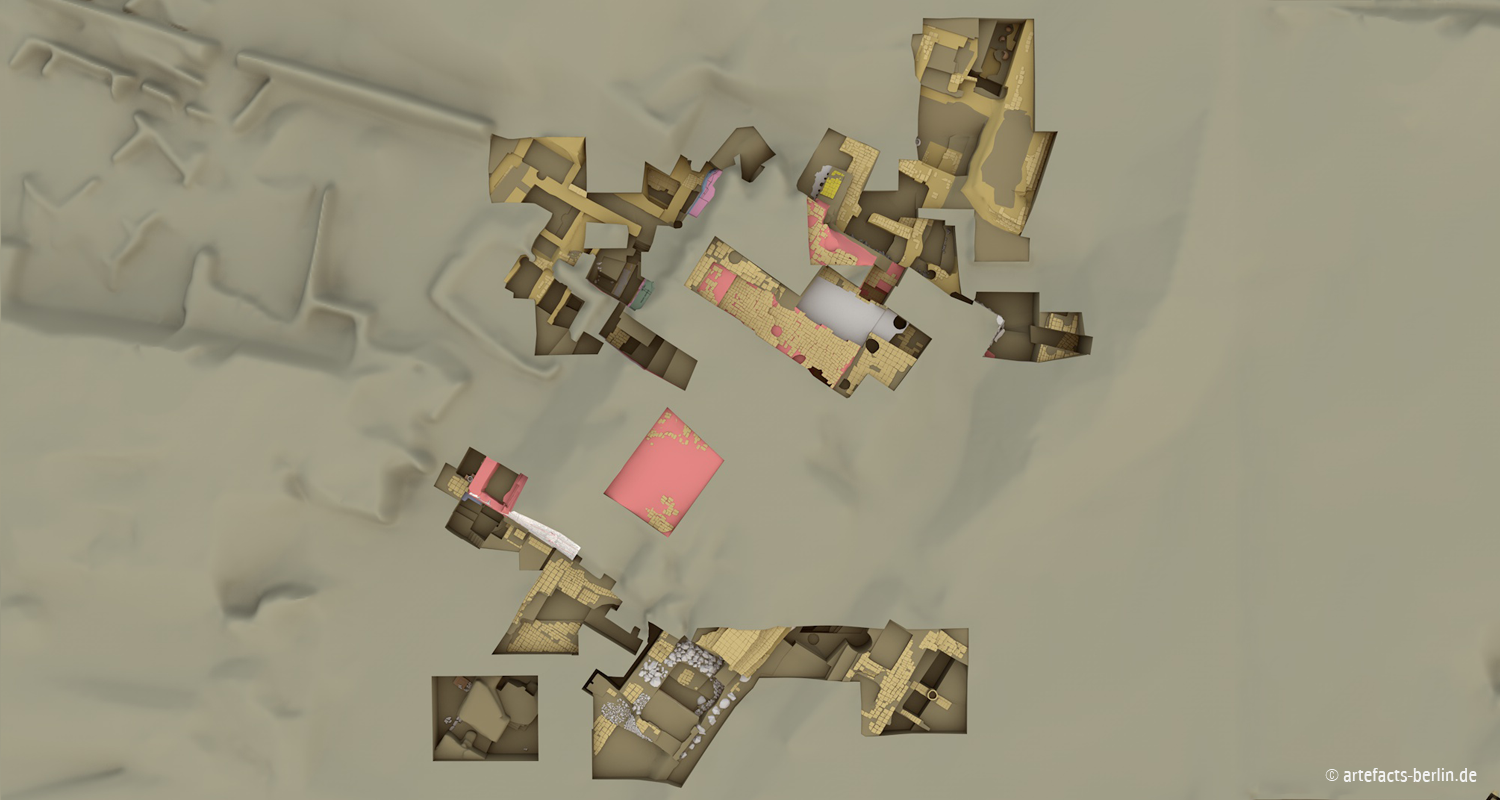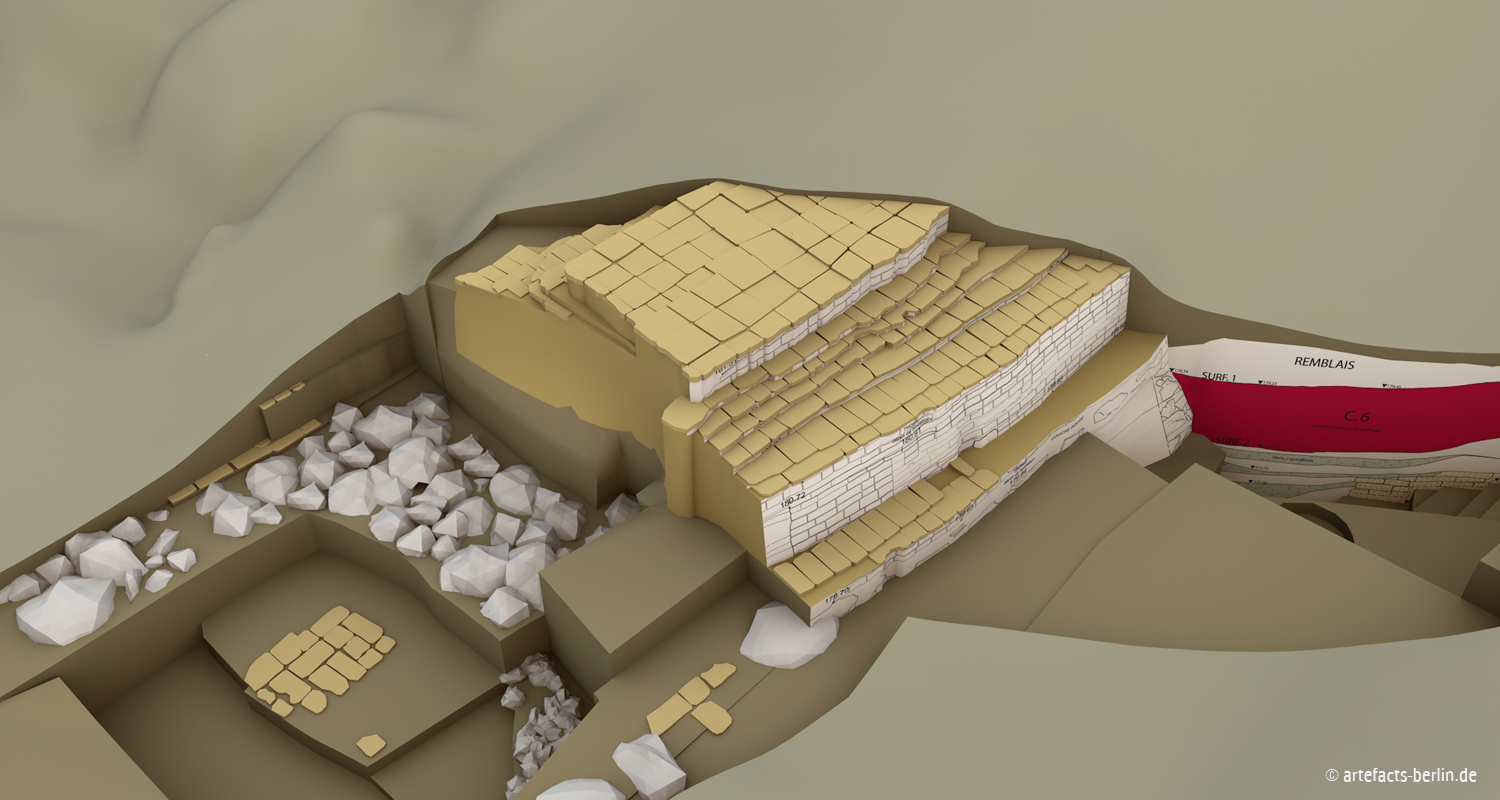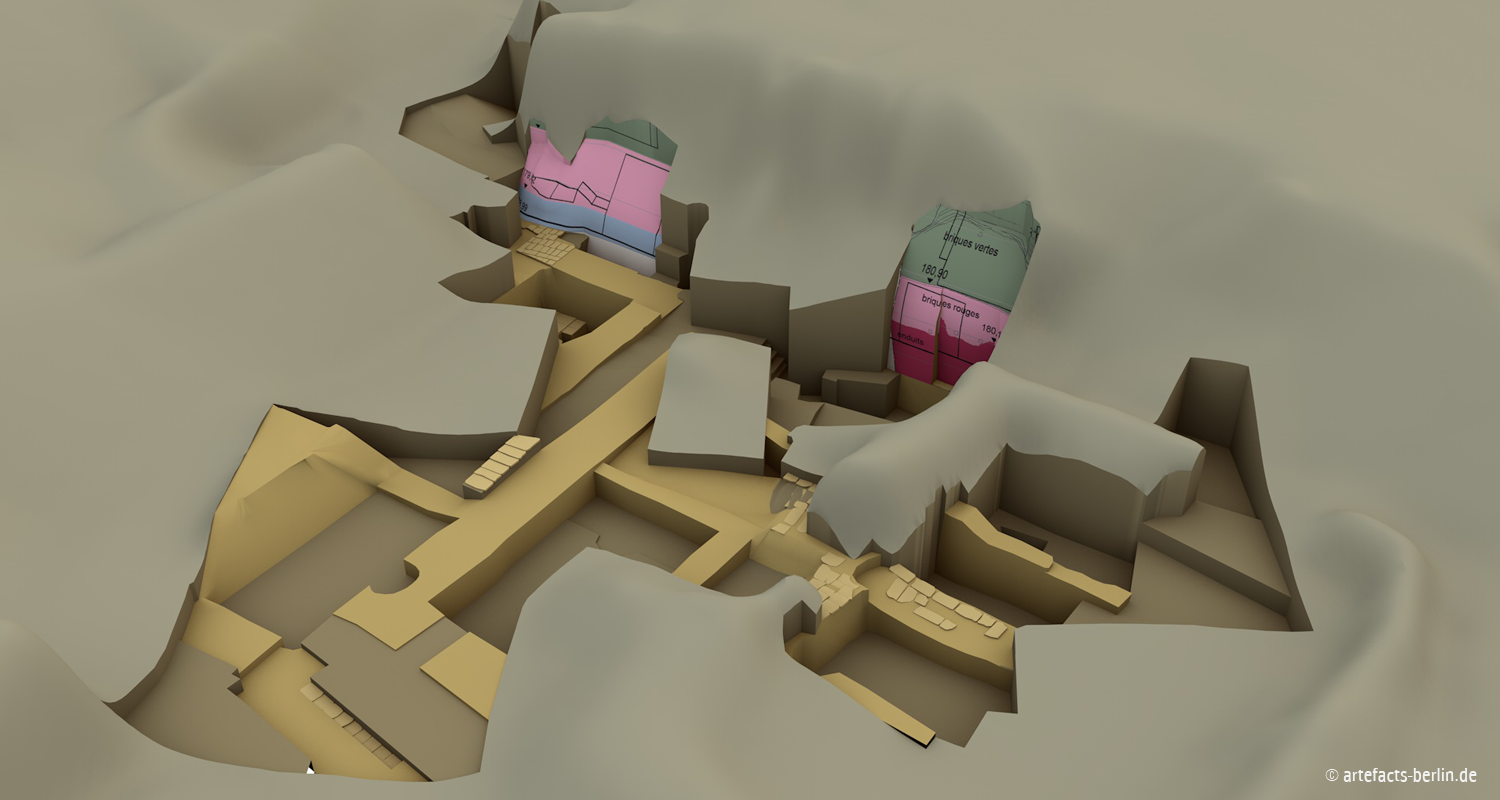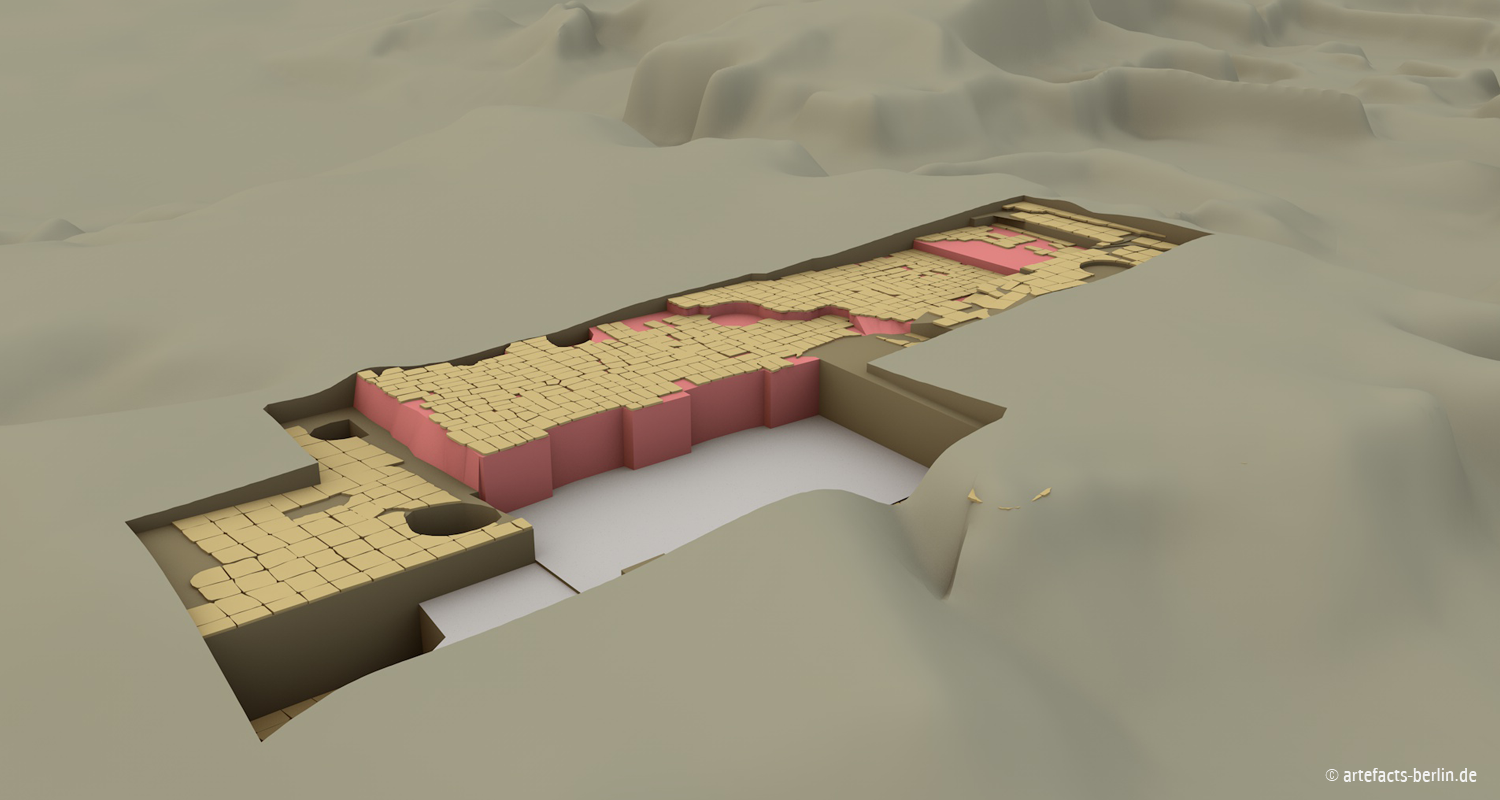About the project
Mari, modern Tell Hariri, located in the Middle Euphrates region in Syria is one of the most famous sites in the Near East, and dates from the 3rd to the beginning of the 2nd millennium BCE. The excavations at the Massif Rouge, a massive red-bricked terrasse, offers a very complicated excavation and research history.
We were commisioned to visualise ten different trenches that were dug around the Massif Rouge and to create a virtual model of the excavation area for presentational purposes. The French team around Prof. Butterlin of the University of Paris (Sorbonne) wanted a user-friendly system with which the archaeologists were able to work at a later point. Furthermore, renderings of the 3D model needed to be used to explain the complicated stratigraphy to a scientific and a non-scientific audience.
As we did before with the excavation trench of V.1, we transferred the excavation data into our 3D software, to create a detailed model of the area. Without the possibility of using Structure from Motion or Laserscan data, we had to reconstruct everything based on plans, sections, photos and descriptions. This form of documentation-based reconstruction was the only way to create a 3D model out of the old and new excavation data.
The whole process took us nearly five years as the data was immense, the discussion with the excavators and processing archaeologists extensive and the stratigraphy complicated. As a result we produced several renderings of the various trenches as well as an open-format OBJ-file for virtually exploring the excavation trenches in 3D for teaching and presentation by the Mari Project Team.
Literature
- Butterlin, P. 2019: The Massif Rouge and Early Dynastic high terraces: Dynamics of monumentality in Mesopotamia during the 3rd millennium BCE, in: Buccellati et al. (Eds.), Size Matters – Understanding Monumentality Across Ancient Civilizations, Bielefeld, 193-207.
- Butterlin, P. 2010-2011: Le massif rouge à Mari, recherches récentes sur le coeur religieux de Mari 2006-2008, in: Les Annales Archéologiques Arabes Syriennes (AAAS), LIII-LIV, 179-194.




